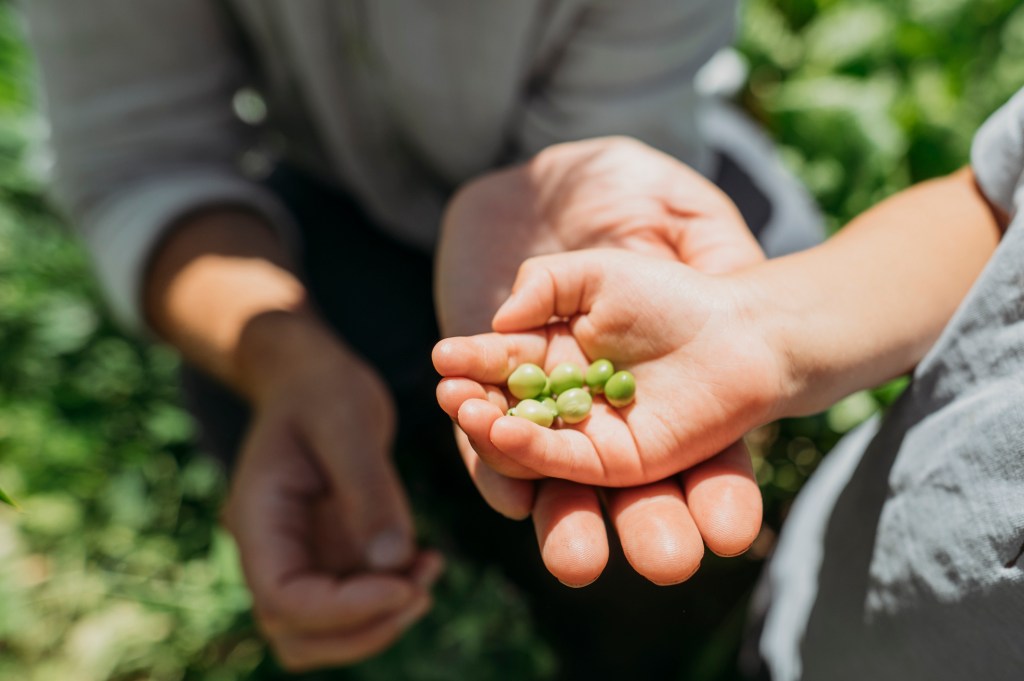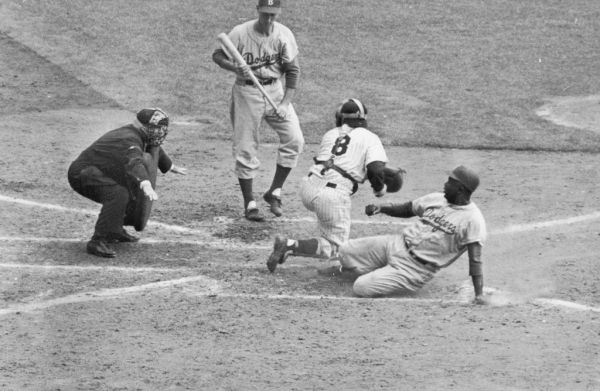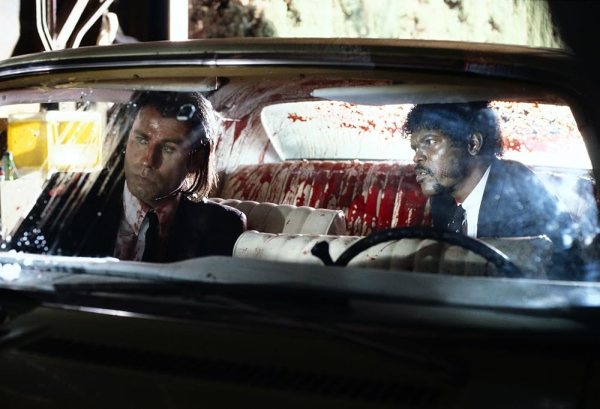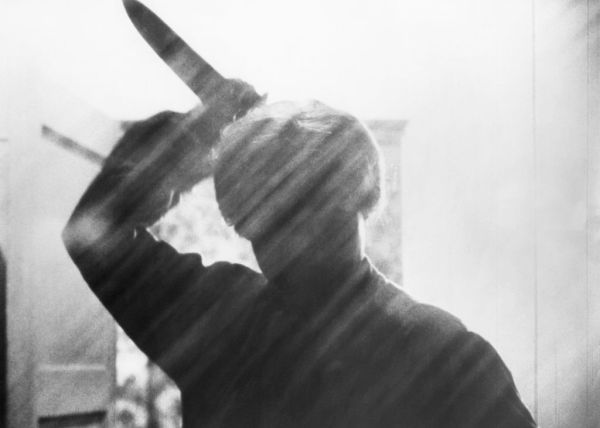A little over a year ago, my family moved from a small town in Georgia to another, smaller town in Ohio. We loved our previous home. It was a place where the blackberries grew lush and wild behind the house; ivy of various sorts encroached, challenging us to dare and stop it; and birds and crickets sang in chorus late into the summer evenings with that most reckless abandon that makes the listener feel a strangely weightless joy. Leaving wasn’t easy. But then our new home welcomed us with yellow flowers in bloom—flowers we did not plant, but which bloomed of their own accord again this summer. A blessing of welcome, it seemed, right along with the patch of wheat that sprouted in our very urban backyard underneath the bird feeder. It turns out that it is not people alone who may be farmers.
Most significant, though, we moved from a newer subdivision on the edge of town—a lovely neighborhood, but one that required driving to get anywhere—to an older street that is immensely walkable. We now live a quarter mile from a park with a playground, less than half a mile from downtown, a mile from the public library, and just a few minutes walk from my husband’s new workplace. And so, instead of having to drive everywhere I went any time I left the house, there are many days now when I do not have to get in the car. Then when I do drive, I pass multiple Amish buggies on the road and park my generic mom minivan next to a horse-and-cart at the grocery store.
I was not prepared for the joy I would feel from this change in scenery, but agrarian theologian and ethicist Norman Wirzba would not be surprised. In his new book, Love’s Braided Dance: Hope in a Time of Crisis, Wirzba offers a heartfelt rewriting of Wendell Berry’s now nearly 35-year-old essay collection, What Are People For? Indeed, the very title—“love’s braided dance”—is a quotation from a Berry poem, acknowledging the influence. But while Berry’s focus has been specifically on the United States, Wirzba goes global in his analyses and proposed solutions. And so, his answer to the question “What are people for?” is: People are for faith, hope, and love in a global community with each other and (this is crucial) with the land on which they dwell. These three—faith, hope, and love—are the strands of which the braided dance is formed and woven.
Love may have been the greatest of these for the Apostle Paul (1 Corinthians 13:13)—but for Wirzba, it is hope that brings together the braided dance of the 21st century, even as it cannot exist without the other two. Why focus on hope? Because we live in a time of many interwoven crises that seem hopeless—and have an overwhelming capacity to foster hopelessness—as the very broad range of case studies in this book readily reminds.
There is a refugee crisis in the Mediterranean—and closer to home as well. The climate crisis continues to worsen. The erosion of human connections and community in this world of extreme urbanization is profound, yet we take it for granted. The weight of history and generational trauma still presses hard upon descendants of survivors of World War II and the Holocaust, but also upon those who had suffered violence and oppression during the South African apartheid. Wars rage in multiple regions of the world right now. At the same time, the way both modern farming and modern urban building practices operate privileges efficiency and the way of machines over the well-being of the land and of people’s souls.
Nowhere is this clearer, Wirzba notes, than in the efficiency of architecture in the Nazi death camps, designed to kill as many as possible in minimal time: “The architectures of terror, dehumanization, and killing were remarkably easy to build. Several of the characteristics prized by modern technocrats–precise calculations and control, maximization of yield, and machine efficiency–were put to work in the camp’s design, construction, and operation.” Wirzba offers Vasily Grossman’s observations about the similarities between the camps and modern cities to ask: Why would we want to imitate such efficiency now in our urban industrial architecture for the living? This is a sobering reminder that efficiency, an idol of our modern time-is-money age, can destroy lives just as easily as it could improve them. This caveat applies also to technology at large. We live in an age of astonishing technological innovation, and some of these advances save lives. But as a military historian, I am also reminded how all innovations in military technology over the past three millennia have involved ways to kill more people—and faster, more efficiently. Such innovation does not lead to human flourishing.
There is a common element to all of the crises considered in this book: They erode, rather than build, connections of people with each other, and between people and other living beings and the land they call home. But amid such profound crises of despair, it is the loss of hope that is most inimical to the pursuit of human flourishing. We can love people at least in the abstract, and we can have faith in God’s will for our good—again, at least in the abstract, without a clear-eyed vision for what this will look like. But without a concrete hope, we will not act—and Wirzba decidedly wants to spur his readers to action. This does not mean embracing the toxic power of positive thinking or empty optimism. Rather, “The remedy for a broken, lonely, and commodified world is fairly straightforward: nurture the places and creatures that nurture us.”
Wirzba’s family history has prepared him well for this vision. His parents lived through weighty atrocities as children and adolescents in Poland during World War II. A few years after the war, their respective families emigrated to Canada, where they resumed their previous occupation as farmers. Most important, the new life they built there, away from the traumas and unspeakable horrors they had experienced in their former home, gave his parents the hope needed eventually to get married and have four children. Family, after all, is a project of not only love but profound hope for the future. It is the lack of hope, by contrast, that has led so many young people today to declare that they do not want to have children. In their recent book on ambivalence toward children, What Are Children For? Anastasia Berg and Rachel Wiseman note specifically the concern over the global climate crisis on the part of many they had interviewed. But few declarations are as overtly hopeless as the decision to not have children.
Of course, Wirzba did not remain a farmer—unlike Berry, who moved back to the ancestral farm after just a few years away. Rather, Wirzba followed a more typical academic trajectory of moving where the job market winds will carry—he now dwells in North Carolina, far from Alberta, where he grew up. This experience influences his perspective. Unlike Berry’s emphasis on rootedness in small towns and in the slow life of traditional farming, Wirzba encourages readers to find ways to embrace a rooted and hopeful stance even in modern urban life. Therein lies the greatest value of the present book: It is a manifesto for human flourishing in the face of the relentless onslaught of AI and encroaching technology in all areas of life.
Indeed, in this way, Wirzba’s book is a hopeful response to Berry’s body of work. What Are People For?, originally published in 1990, ended on a hopeful note. Yet more recently, in both nonfiction (e.g., The Need to Be Whole) and novels Berry has written in the 21st century (e.g., Jayber Crow and Hannah Coulter), one begins to see a turn that is less hopeful, more melancholy than before. As Eric Miller notes in his review of The Need to Be Whole in 2022, “The pathos of this long, loving book (more like a letter, in a way) lies in its story of defeat and decline. Berry details his losses chapter by chapter, from the structural to the local to the personal.”
This turn in Berry’s work gives the impression of hopeless conviction—that yes, one could continue living as Berry has his entire life, using simpler technology for farming while all others around him have gotten tractors and large-scale combines. And yet, what is the point for just one man to refuse to buy a computer when everyone else around has gotten one? But it was one thing for Andy Catlett in The Remembering to lose his arm to a machine in 1975. It is another for all of us to lose our brains to modern technology in this Anno Domini 2024—while losing our souls and possibilities for covenanting with other image bearers of God to the disconnected lifestyle imposed on us by the isolating architecture of modern life.
It doesn’t have to be this way. To pursue hope remains Berry’s desire; it is Wirzba’s as well. In the opening episode of the book, Wirzba tells about Carmine, a man on vacation in the Mediterranean, who in his little ship comes across a group of drowning men from another ship that had capsized. These were illegal migrants, trying to get into Europe from North Africa. For Carmine, the formative moment was the grasp of another man’s hand, as he pulled him out of the sea—from looming death to life. In that moment came the realization that yes, even one man can respond to brokenness in hope and love, and that communities—and hands clasped in kindness—still bring joy and human flourishing today.









Please note that we at The Dispatch hold ourselves, our work, and our commenters to a higher standard than other places on the internet. We welcome comments that foster genuine debate or discussion—including comments critical of us or our work—but responses that include ad hominem attacks on fellow Dispatch members or are intended to stoke fear and anger may be moderated.
With your membership, you only have the ability to comment on The Morning Dispatch articles. Consider upgrading to join the conversation everywhere.